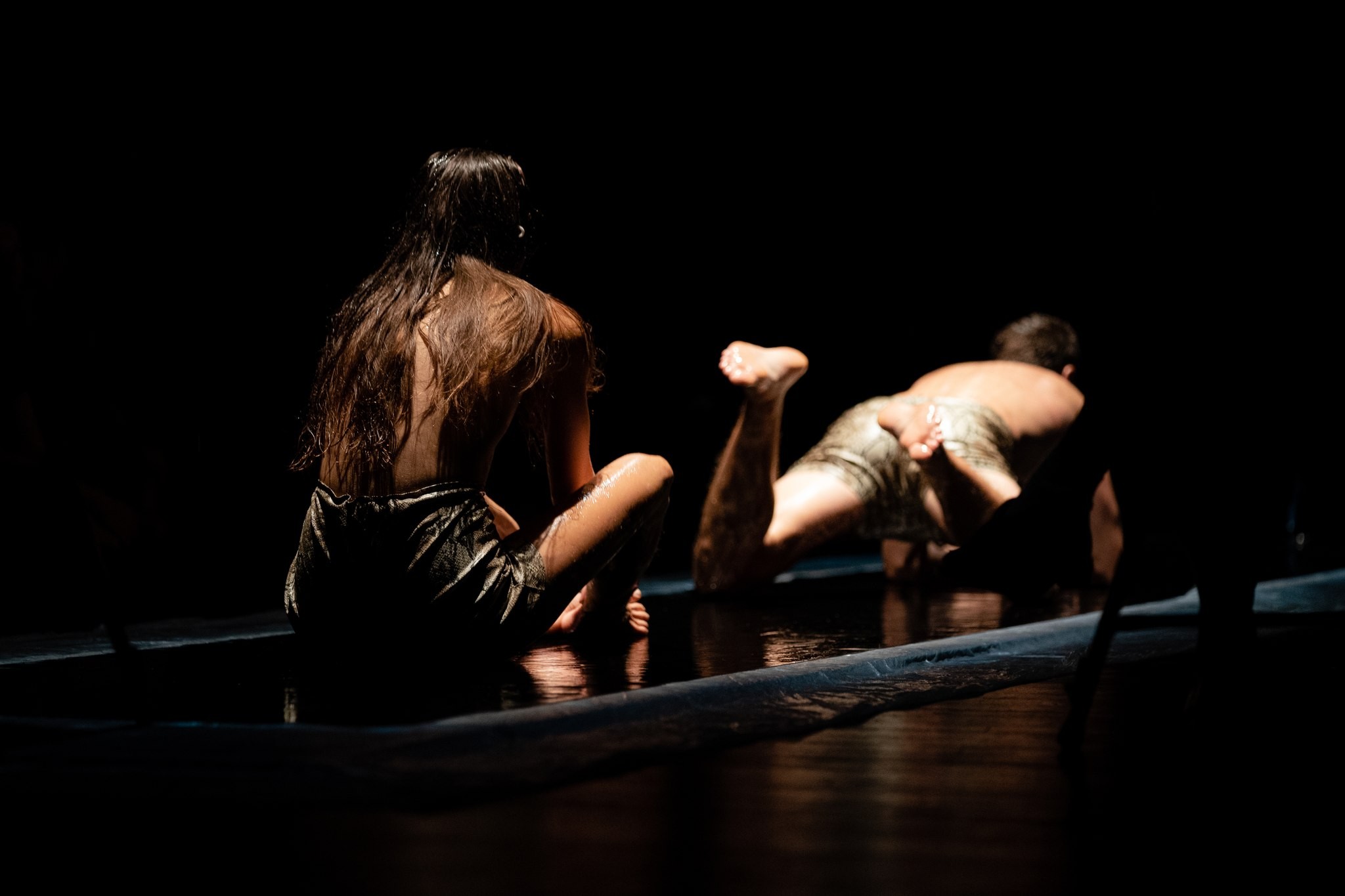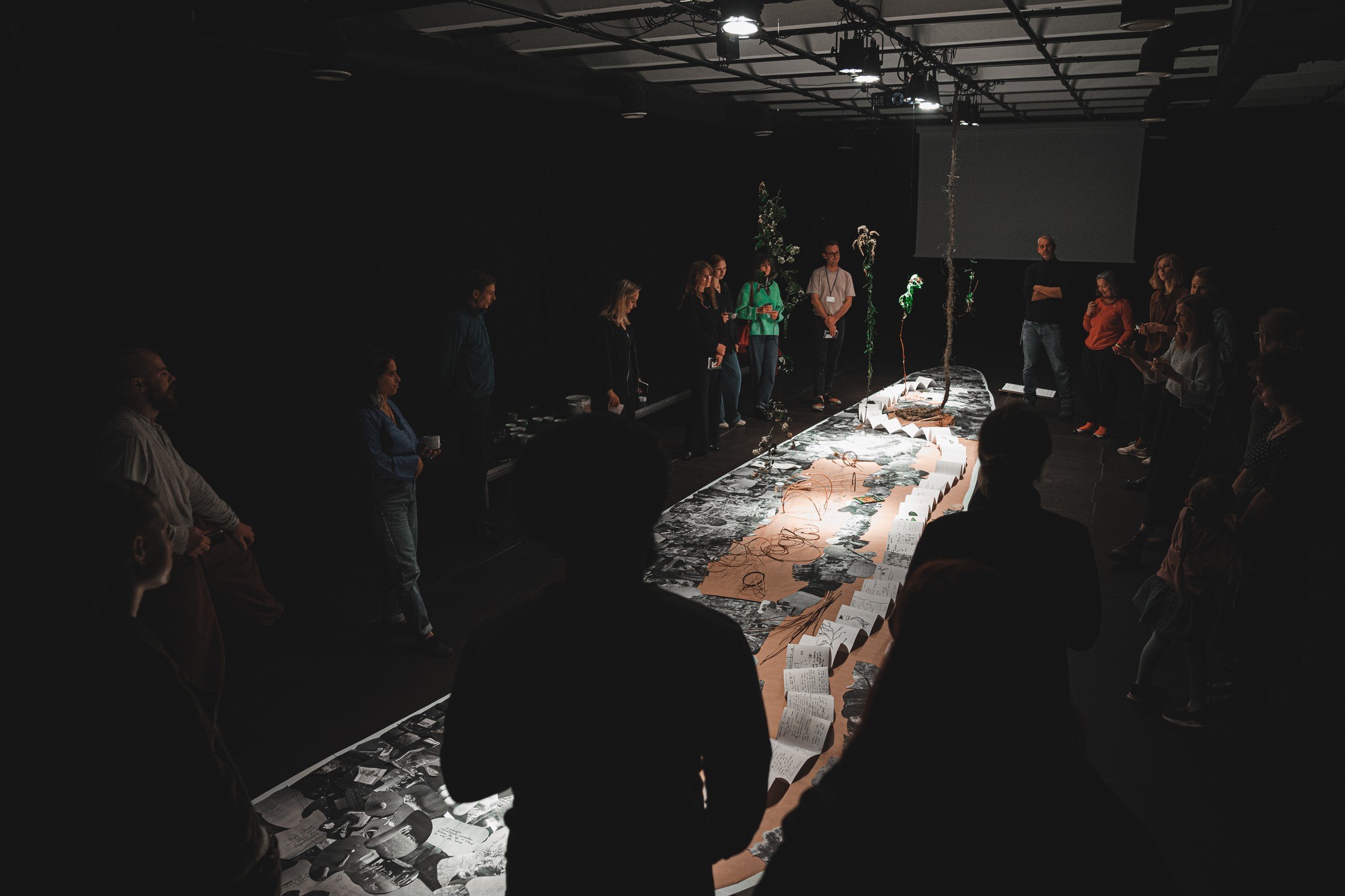2022
Maria Koreneve & Sandro Garibashvili
In collaboration with the Low Air Urban Dance Theatre, the Arts Printing House hosted the first residency of Ukrainian artists. Representatives of the physical theater Sandro and Maria tell about their project:
"You don't know what war is until it happens to you. 5 a.m. and boom – you're there. And whatever you try to say about it, it's different from what the whole body really feels...
We are creating a play about the somatic response to the war in Ukraine.
What do I feel when bombs fly and the whole city is bombed? How can I understand the value of my life when I have to evacuate? How to decide to stay or leave? What does it mean to be alive at all when you are so close to death? Raising these questions, we will try to take a closer look at the impact of war on our body and our psyche. We will create a dance from the trauma of the war itself. The method of researching this play is physical theater."

Anatole Coety
Anatole Couety, who worked on his latest work for two weeks, invited her to a sketch review of the work and led a Chinese pole workshop for people interested in modern circuses.
The working name of this project is Stalactite, it is about a creature living far from the earth and its inhabitants, settling on its own stalactite. It's a one-scene show like an allegory about a humanity trying to regain its connection to the earth, it's like my acrobatic poem without putting a foot on the ground.

Lisa Lou
About Lisa Lou's solo work:
"Does a cat, chasing its tail, know that this is part of her own body?
Can she choose between stupidity and wisdom as she is more comfortable in that moment?
When playing with your tail, does the same instinct activate as when chasing a mouse?
"L'ombre de Kruskelusk" in this metaphorical paradox plays through a character who is in her own world, but not quite alone in her loneliness. Realizing that her body is her own, she dances and fights with it, and sometimes helps him unwrap the knots she has created herself. Seeing her body as a cat sees its tail, the artist tells the story of the space between consciousness and instinct, anxiety and rationality, play and survival."

Andrea Rodríguez de Liébana & Sergio González
"Masha is a neutered cat, she lives in a 80m2 flat in Barcelona. Her daily activities consist of sleeping, eating food and pooping. Despite her confinement, she is privileged, European and can go to the vet. New spaces are difficult for her, her animal instinct prevents her and makes her alert, almost bordering on paranoia. She is not able to identify other cats as her own kind. Masha inspires us, her condition speaks of our own.
We have created two avatars, decided that they are devoid of emotions, put them on a smooth, shiny, slippery surface and confine them to 8 metres long by 1 metre wide. We force them to evolve on a journey from "synthetic" to empathetic and caring humanity. In this 8 metre by 1 metre space, we applied body oil to the entire surface of the linoleum floor. We turn something as simple as taking a step into something difficult, tedious but at the same time pleasurable. It is impossible to generate physical feats, the movements have to be simple and functional."

TAAT
TAAT is an art collective that develops ecological installations for embodied encounters between human and other-than-human entities. It is a transdisciplinary practice that moves between artistic research, social practice and collaborative learning. TAAT is currently developing a series of 'encounter portals’ internationally: bio-based architectures that contribute to our regenerative coexistence. The practice facilitates encounters in these areas and aims to increase interconnectedness and reciprocity between humans and other-than-human entities.
HALL09 is part of the longterm project HALL33, which is generating experiences that question or generate new ways of co-existence in our planet. TAAT’s regenerative design approach aims to restore a holistic awareness of non-human entities. This approach helps us shape the future by recognizing and enhancing biodiversity, cultural diversity and neurodiversity. TAAT is interested in how ‘performance scores’ inform their installation works. Therefor TAAT produces embodied experiences for designers, students and the general public alike. These are 'staged embodied encounters' that generate a critical awareness of our human-centered position in the world and propose alternative ways of coexistence.
